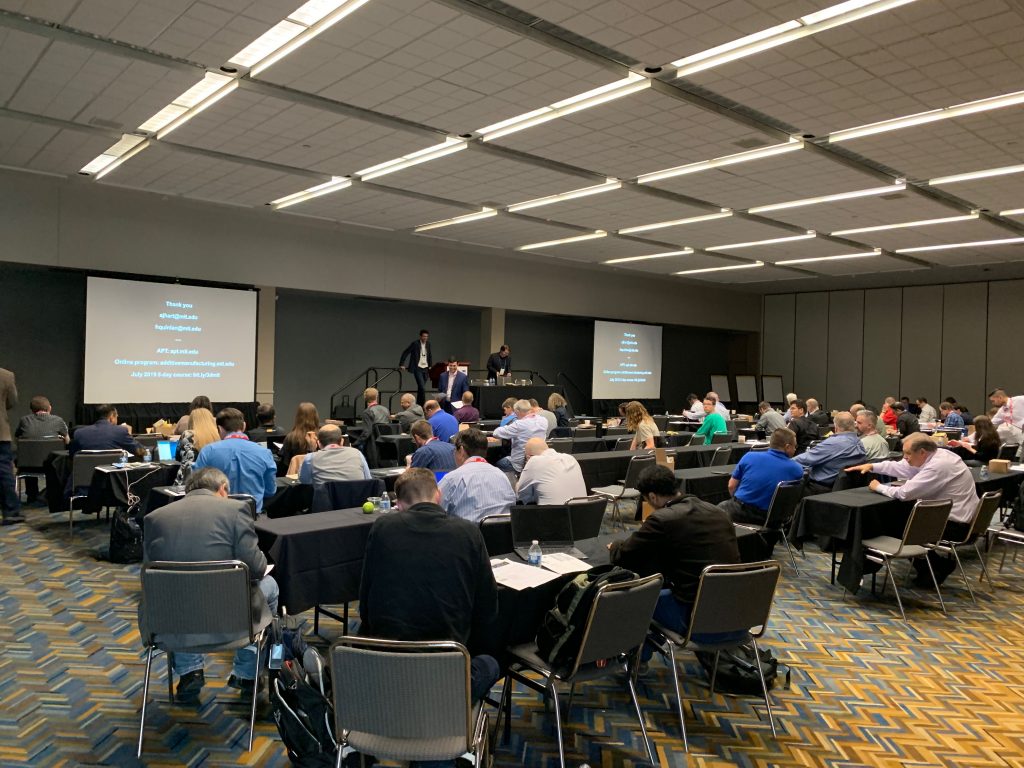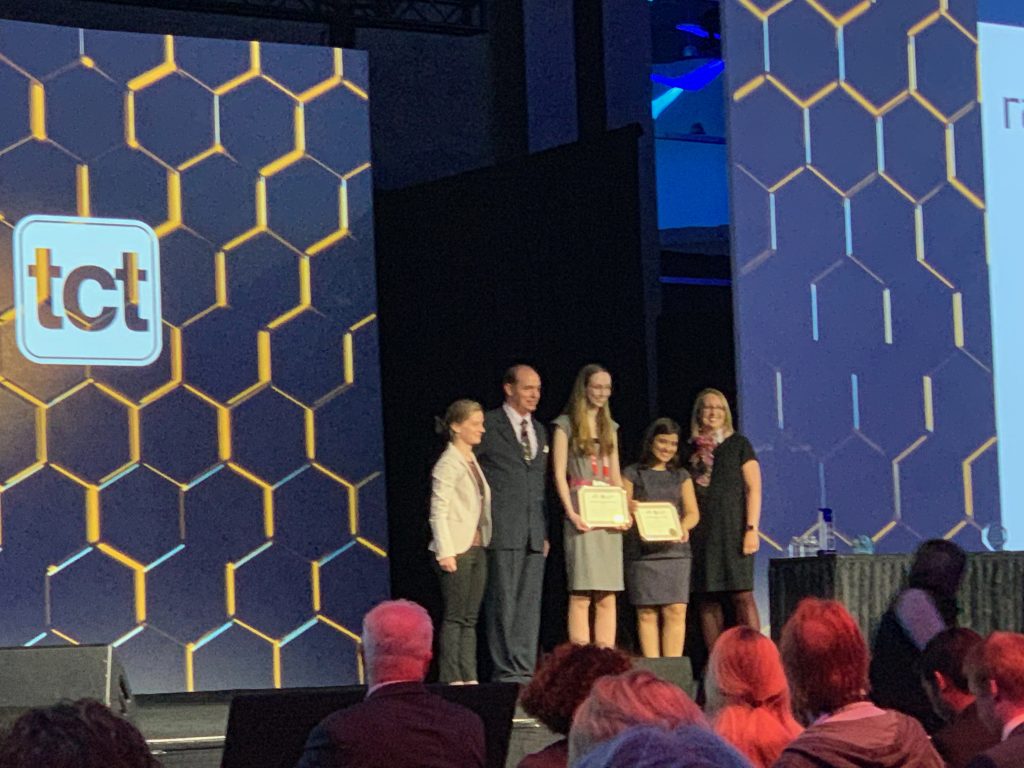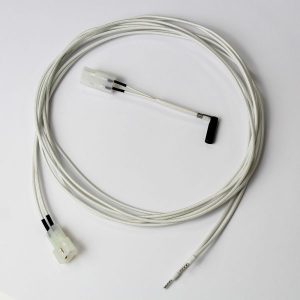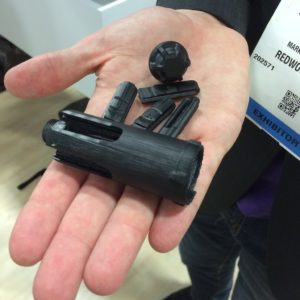Modix launches three new large-scale FDM printers – technical specifications and pricing
Review: The BCN3D Sigmax R19 – Independent dual extrusion, large volume FFF
3D Printing Industry News Sliced: AMT, BCN3D Technologies, ParaMatters, Prusa, NASA
Bondtech launches Direct Drive System upgrade kit for Creality CR-10S 3D printer
RAPID 2019: Opening Day and Opening Ceremony
The first day of the RAPID + TCT conference was bristling with activity. The first day mostly consists of lectures and workshops. At some other conferences, this is a secondary affair but here in Detroit we’re really seeing this to be the meat and bones of the conference on day one. There were a tonne of conference events and workshops today from the very general to the highly specific. There were workshops on casting materials for automobiles, implementing quality systems for medical devices, metal printing, and how to use 3D printers in hospitals and biomaterials. A lot of these were almost all day events with multiple speakers that were almost conferences in and of themselves.

Professor Hart’s Workshop
Professor John Hart gave a great presentation on applying materials and processes to making 3D printed parts throughout the life cycle. This workshop was great for people trying to start business cases internally with 3D Printing. It covered things such as costing and the relationship with the design to the final part. Walking around through all the workshop rooms I was really spoilt for choice. I really do believe that the “workshop day” at Rapid is underappreciated and under-visited. There are people here and there is knowledge here that you really can not find anywhere else. Do not miss this first day if you want to come next year! Having said that there were thousands of attendees for the different workshops and the first day already felt like a big conference.
Things started to get much bigger when we went to the Ballroom for the main opening ceremony.

Erika Berg of Carbon and Vitorrio Bologna of Riddell
Erika Berg of Carbon and Vitorrio Bologna of Riddell keynoted on how their companies were working together to try to make individualized mass customized helmet liners for football helmets. Individual helmets and other sports gear could become a huge application for 3D printing. Using one build of a Carbon L1 3D printer all of the distinct parts of a helmet liner can be produced. The data comes from a scan of a players head which is now done by 3D scanners but Riddell wants to go to a home scan solution for that in the future. The data gets sent to Carbon which then calculates the optimal design of the helmet cellular structure which may have 140,000 struts. Riddell already has 4000 3D scans to work with as well as thousands of readouts of player crashes to tell them how to design the helmets. In the future, the team wants to put accelerometers and other sensors in all helmets to acquire more data that would let them produce better helmets. They want to implement this for all football players from the Pro’s and college to the youth level. All in all the approach with cellular structures and data gathering seems very sound and this is a huge application for 3D printing if it goes forward. I just have questions with the Carbon business model. If Riddell leases the printers if Carbon slices the files if Carbon determines the optimal structure of the helmet then what is Riddell?
If we look at firms such as Nike: Nike is the brand, they design the shoes and know how to market and brand them. Others manufacture. Now Riddell is outsourcing key ownership of the core design competency that they and firms like Nike have. Won’t they be tied to Carbon forever? Isn’t the core part of their helmets the connection between the “crash test data”, head scans and how to create the cellular structures for the helmets?
Carl Dekker of Met-L-Flo then came on. He is the current ASTM 42 Chairman and Advises SME. He presented awards on the best research paper and project. Fast Robotic Soft Matter 3D Printing for Neurosurgical Phantoms Fabrication by Michael Chang was the winner of the Dick Aubin Distinguished Paper Award. On the 23rd you can see him present it. On the research project side the winner was The Copper Cooler: Heat Sink for CPU’s by Lisa Brock and Gitanjali Shanbhag.

Industry consultant Todd Grimm then took us through the companies that had applied for the innovation award and revealed that 48 out of 400 exhibitors would be on a list to be considered. He then went on to detail all of the firms and their particular innovation in order to tell everyone “What’s New” at Rapid. I thought that this was a particularly helpful presentation for visitors. He also mentioned that the finalists for the innovation award would be: Digital Alloys, e3D, Fabrisonic, Formalloy, NXT Factory, Rapidia, Sigma Labs and Sintratec. I for one really can’t choose there are a number of very deserving firms there and also some very sympathetic teams. Usually one could guess but this time its wide open as far as I’m concerned.
Then the SME Industry Achievement Award was revealed. The winner was Ely Sachs. Ely was a Desktop Metal co-founded but also a core inventor of the “MIT patent” inkjet head based 3D printing technologies years earlier and a more than deserved winner! This was a very exciting almost my brain runneth over first day here in Detroit and I can’t wait to discover more.
E3D Skunkworks releases Pathio, a new slicer for FDM/FFF 3D printing
3D Printing Industry Awards 2019 Start-up of the Year update
E3D Introduces New Line of High Temperature 3D Printer Components
 E3D has been working with Victrex to develop a new PAEK 3D printing material, a specialized high temperature filament. Such a special filament requires several advanced components to print with, and E3D is working on delivering. The company is introducing a new high temperature range, including high temperature heater cartridges and heated beds.
E3D has been working with Victrex to develop a new PAEK 3D printing material, a specialized high temperature filament. Such a special filament requires several advanced components to print with, and E3D is working on delivering. The company is introducing a new high temperature range, including high temperature heater cartridges and heated beds.
E3D needed to solve two main issues encountered when using heater cartridges at highly elevated temperatures. The first issue was that standard heaters lack sufficient power when operating at higher temperatures, and the second issue was that conventional high powered heaters tend to burn up within just a few dozen hours when running above 400ºC. So the company developed a new type of heater. It uses a new type of resistance element wire, surrounded by tightly packed and consolidated ceramic insulation, making it capable of continuous operation at high temperatures.
The cartridge is also fitted with a special high thermal conductivity conformal coating which improves heat transfer to the hot end. This strengthens performance and improves long term reliability as the heater is able to more effectively dissipate heat, reducing localized hot spots. The cartridge also features a 90-degree bend which makes packaging easier, simplifies cable routing, and prevents internal damage through strain relief. Finally, it has a high gauge silicone glass fiber cabling with a connector.
“Naturally, printing at such high temperatures bears several risks,” E3D states. “For one, our standard aluminium blocks can soften when used with these heater cartridges, and even our hardened steel nozzles will lose some of their hardness…For this reason, we strongly recommend using these heater cartridges with our nickel plated copper range of products, and as a bonus this will offer more effective thermal conductivity and increased thermal mass.”
E3D also developed a high temperature heated bed that can reach more than 100ºC in only 80 seconds. Overall, they can reach temperatures of up to 200ºC. The company has taken every measure to make the beds safe and reliable.
“Existing silicone rubber heater mats rely on an adhesive sheet which adheres the silicone heater to the underside of the print bed,” E3D explains. “The main issue with this method being that the adhesive fails when operating above 100°C which is limiting when you consider that the overall purpose of the expansion was to enable your bed to operate at higher temperatures. To overcome this we have vulcanised our heaters directly to the anodised under-surface of super-flat aluminium plate. Here the silicone cures onto the aluminium surface, intimately joining the two. This completely eliminates the need for the performance limiting adhesive and ultimately brings the heater into a very close contact with the bed.”
The heated beds are offered in six different varieties of sizes, voltages and wattages. As with the cartridges, E3D recommends using the heated beds with its plated copper components, which stay strong and don’t soften when operating at higher temperatures. They also have a plated coating that reduces the buildup of molten material on the nozzle.
High temperature printing components coupled with printers that manage the thermal stability of the build chamber well can let 3D printers print high-performance materials such as PEEK, PEI and PPA’s. These materials need to be processed at higher temperatures but can give operators higher Continuous Service Temperatures, mechanical strength and qualities surch as high wear resistance by letting them print out some of the highest performance extrudable polymers available. By making these components available E3D is aiding a lot of OEMs in giving them an easier path to high-temperature 3D printers. Many more new vendors should enter the market because of this. You can learn more and buy E3D’s high-temperature range here.
Discuss this and other 3D printing topics at 3DPrintBoard.com or share your thoughts below.
2018 TCT Hall of Fame Inductees and 3D Printing Award Winners Announced
This year’s TCT Show, held in Birmingham as usual, ended earlier this week, and yielded many announcements about new 3D printing materials, software, and of course, 3D printers and their associated hardware. Additionally, the annual TCT Awards was held for the second time during a gala dinner at the Hilton Birmingham Metropole on Wednesday. British actor and presenter Robert Llewellyn hosted the nearly 300 guests at the awards, which celebrates, according to TCT Group owner Rapid News Publications Ltd, “the people, technology and collaborations behind the best in design-to-manufacturing innovation.”
There were 14 competitive award categories, and the TCT Awards recognized the partners in many collaborative projects, in addition to the designers, technology providers, and engineers. Three more 3D printing industry leaders were also inducted into the TCT Hall of Fame in honor of “their contribution to the industry and to the growth in technology adoption.”
“Once again it was a privilege to share an evening with so many truly exceptional people,” said Duncan Wood, Chief Executive of Rapid News. “All of the winners are to be congratulated for their successes, and of course in particular the Hall of Fame inductees need a special mention, their innovation, entrepreneurship and commitment has played a huge part in the development and success of the industry.
“I must also thank our sponsors 3ecruit, as well as our supporting partner, Innovate UK for their endorsement of the event and of course our judges. The TCT Awards night is fast becoming THE night of the year for the industry and we are looking forward to the 2019 edition already!”
The first of the new TCT Hall of Fame inductees is Dr. Carl Deckard, who invented and developed Selective Laser Sintering (SLS) 3D printing technology while based at the University of Texas. Together with his former professor Joe Beaman, Dr. Deckard co-founded DTM Corporation, which was later purchased by 3D Systems, to commercialize SLS 3D printing.
The second 2018 inductee into the TCT Hall of Fame is application specialist and process pioneer Greg Morris. In 1994 he founded Morris Technologies, a specialist AM services provider, which was purchased by GE Aviation in 2012, along with sister company Rapid Quality Manufacturing. His work in developing metal 3D printing applications and processes has increased their adoption in the aerospace and medical sectors, and he distributes his knowledge through his involvement in the speaking circuit.
Professor Emanuel ‘Ely’ Sachs, who invented binder jet printing at MIT in 1989, is this year’s final TCT Hall of Fame Inductee. Professor Sachs, who is on the leadership team of Desktop Metal and still teaches at MIT, actually coined the phrase ‘3D printing’ at that time, and binder jetting technology is a building block for much of the market’s current technology.
As for the rest of the TCT Awards, Project MELT, with its tech lead listed as BEEVERYCREATIVE, won this year’s Aerospace Application Award, while the winner of the Automotive Application Award was the BMW i8 roadster SLM bracket by tech lead SLM Solutions.
The Vitamix nozzle by Carbon won the Consumer Product Application Award, while the winner of the Creative Application Award was the Embrace jewelry collection by Cooksongold for Boltenstern. SPEE3D won the Hardware Award – Non Polymers for LightSPEE3D, and the Hardware Award – Polymers went to E3D for its Tool-Changer.
Axial3D won the Healthcare Application Award for the use of its pre-op planning model aids in a world-first surgery at Belfast City Hospital, and Trinckle 3D won the Industrial Product Application Award for its mass customization of copper inductors. The Materials Award – Non Polymer went to SABIC for its EXL AMHI240F 3D printing filament, and NanoSteel took the Materials Award – Polymers for its BLDRmetal L-40 steel 3D printing material.
3D Systems was the winner of the Metrology Award for its Aircraft Damage Assessment for Easyjet, and Steros GPA Innovate S.L. won the Post-Processing Award for its DLyte: Metal DryLyte Electropolishing. Materialise won the Software Award for its e-Stage Metal, and this year’s Rising Star Award was given to HiETA Technologies Ltd.
To learn more about the winning projects and companies, and see the Highly Commended projects, visit the TCT Awards website.
Discuss the TCT Awards and other 3D printing topics at 3DPrintBoard.com or share your thoughts in the comments below.







